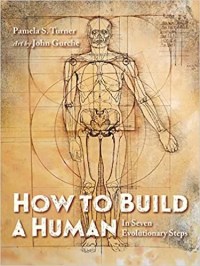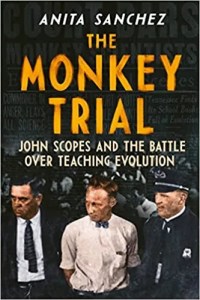
Darwin’s Theory of Evolution and discovery of natural selection changed the way people viewed themselves and the world around them. The idea that organisms adapt over time to survive in their environment was groundbreaking. It contradicted what people had always assumed to be true. Many incredible books have been written to help students understand the importance of this discovery and how it influences our understanding of the world today. These books can be used as a springboard for classroom discussions and activities.

One Beetle Too Many: The Extraordinary Adventures of Charles Darwin by Kathryn Lasky and Matthew Trueman
This book does an excellent job of making Charles Darwin relatable to young readers. He was a child who loved all type of creatures, including insects and worms. He loved being outside and took great pride in his collections. Kids may see that they aren’t too different from Darwin, and that will keep them engaged throughout the entire book. The illustrations complement the text perfectly, and students will want to look closely to take in all the details.
 Charles and Emma by Deborah Heiligman
Charles and Emma by Deborah Heiligman
Many biographies of Charles Darwin focus on his research and his time spent on the HMS Beagle. Charles and Emma, however, starts after that adventure is already over, when Charles is trying to decide if he should get married. The relationship between Charles and Emma was a loving one, but she, like many others at the time, had trouble accepting his Theory of Evolution. It completely contradicted peoples’ religious beliefs. This book explores Charles and Emma’s relationship and how that impacted his thinking and his work. Young readers will view Darwin through a different lens.

Evolution: How Life Adapts to a Changing Environment with 25 Projects by Carla Mooney and Alexis Cornell
In this book, STEM Tuesday’s own Carla Mooney makes evolution accessible to middle grade readers. She clearly explains what it is, how we think it works, and how this ongoing process will affect the future of our planet. The thought provoking essential questions and subsequent activities give students hands on opportunities to discover how and why animal adaptations occur.
The following two activities were taken directly from this book and are ones I think students will especially enjoy.
Activity 1 – Create Your Own Animal
In this activity, students will create their own animal with useful adaptations. They will begin by considering the following questions.
- Where does the animal live?
- How much water is in the area?
- What is the climate and weather like in this location?
- What does the animal eat? What predators threaten the animal?
Using these details, students will create their animal. What does it look like? How does it behave? Have them write a paragraph describing their animal and its behaviors. Draw a picture of the animal. What adaptations does the animal have to help it better survive in its environment?
Now try this: Have students design another environment. Imagine their animal in the new environment. What features are useful for the animal in the new environment? What features are not helpful? If the animal stays in the new environment, what new adaptations do you predict will arise during many generations. Why?
Activity 2 – Darwin’s Finches
In this activity, students will demonstrate how different adaptations can help different birds collect food.
- Gather several objects that represent different types of seeds a bird might encounter, including large seeds, small seeds, dried beans, rice. etc.
- Find or design several “tools” that they can use to pick up the seeds. Ideas include forks, spoons, knives, chopsticks, tweezers, and straws. Students can also build their own tools.
- Using each tool, attempt to pick up each type of seed. Which tool works the best? What type of seed is the easiest to collect? Which tool is the least effective? Which seed is the hardest to collect? Do some tools work better with certain seeds and not others?
Now try this: Students will demonstrate the process of evolution by natural selection using the seeds and the tools. Using only one type of food, assign each of the tools to the students. Set a time limit and see how many they can collect with their assigned tool. After the time has expired, see which tools have collected the most food. Those that did not collect enough food will die out and be replaced by the top-performing tools. Have students repeat this process several times. What happens to the tools in the population? What was the role of natural selection in the outcome?
Peppered Moth Simulation
In this online game, students will see how camouflage protects moths through the eyes of a predator. Click here to access the game.
Speciation Video
Further explore the idea of speciation by having students watch this video from the Cornell Lab of Ornithology. Click here to access the video.
Hopefully, these books and activities will help students understand the Theory of Evolution and how it influences our understanding of the world today.
***************************************************************************************************************

Jenna Grodzicki is the author of more than twenty fiction and nonfiction children’s books. Her books include Wild Style: Amazing Animal Adornments (Millbrook Press 2020) and I See Sea Food: Sea Creatures That Look Like Food (Millbrook Press 2019), the winner of the 2020 Connecticut Book Award in the Young Readers Nonfiction Category. Jenna lives near the beach with her husband and two children. In addition to being a writer, she is also a library media specialist at a K-4 school. To learn more, visit her website at www.jennagrodzicki.com.












 Callie Dean is a researcher, writer, and musician living in Shreveport, LA. She writes stories that spark curiosity and encourage kids to explore their world. Follow her on Twitter at
Callie Dean is a researcher, writer, and musician living in Shreveport, LA. She writes stories that spark curiosity and encourage kids to explore their world. Follow her on Twitter at  Welcome to STEM Tuesday: Author Interview, a repeating feature for the fourth Tuesday of every month. Go Science-Tech-Engineering-Math!
Welcome to STEM Tuesday: Author Interview, a repeating feature for the fourth Tuesday of every month. Go Science-Tech-Engineering-Math! 
 Karen: I really like the interactive nature of this book, with origami folding exercises to try and Lerner’s AR app. The app brings images to life, like NASA’s InSight Mars lander image in Chapter 5. It shows how the lander’s solar arrays unfold from their compact shape. It’s really cool!
Karen: I really like the interactive nature of this book, with origami folding exercises to try and Lerner’s AR app. The app brings images to life, like NASA’s InSight Mars lander image in Chapter 5. It shows how the lander’s solar arrays unfold from their compact shape. It’s really cool!

